Augmentation mammoplasty/mammary implants
Mammary hypoplasia is defined as a breast volume which is insufficiently developed in proportion to the patient’s morphology.
It can be a pre-existing condition (small breasts from puberty) or appear later, after substantial weight-loss, a pregnancy, or hormonal problems.
It can occur alone or be associated with ptosis (sagging of the breasts and skin stretching and a lowered areola).
This is a purely cosmetic procedure and cannot be reimbursed by health insurance.
Only rare cases of total absence of breast formation (mammary agenesis) can be partly reimbursed after prior permission.
The great majority of implants used in France are pre-filled silicone gel implants.
There are classic round implants, anatomic shapes implants and smooth or textured implants.
The type of implant is chosen during a consultation.
Mammary implants: Before the procedure
During a discussion and a consultation, the surgeon will take into account all the relevant parameters for each case (height, weight, pregnancies, breast feeding, size of the existing breasts, skin quality, body fat, gland, muscle tone...).
After studying these anatomic features and the expectations of the patient, the surgeon will determine the plan for the operation.
This will also take into account the positioning of the scars, the type and size of implants, and the position of the implants above or below the muscle (see below).
A preoperative blood test is made following your surgeon’s recommendations.
An anaesthesiologist will see you in consultation at the latest 48 hours before the operation.
It can be helpful to use medical imagery (mammography, echography).
No aspirin-based medication should be taken during the 10 days preceding the operation.
You need to fast (neither eat, drink or smoke) 6 hours before the operation.
Mammary implants: The procedure
Doctor Santini has has her personal technical approach which is adapted to each individual client to obtain the best possible results.
However, there are common principles:
Incisions
- peri-areolar approach, the incision is either below the circumference of the nipple or horizontal below the nipple.
- axillary approach, the incision is below the arm, in the armpit.
- sub-mammary approach, the incision is in the fold below the breast.
Implants can be positioned in the prepared location through the incisions.
Two positions are possible:
- Implant in front of the muscle, behind the mammary gland and in front of the pectoral muscle.
- Implant behind the muscle, deeply behind the pectoral muscle.
In the case of ptosis (sagging breasts, a lowered areola), it is appropriate to associate a breast lift (mastoplexy).
This implies more visible scars (around the areola and/or vertically).
A small drain may be left in place in order to evacuate any blood which may form around the implant
At the end of the procedure an elastic bra-like bandage is put in place to maintain the bandage and the implants.
The operation lasts one to two hours depending on the incisions and the associated treatments.
Mammary implants: After the procedure
There can be pain for the first few days after the procedure, particularly when the implant is large and placed behind the muscle.
Pain medication of the strength necessary to dull the pain, is prescribed for several days.
Even if there is no pain there will be a strong sensation of tightness. Swelling, bruising and difficulty in raising the arms are frequent immediately after surgery.
The original dressing is removed the day after the operation.
An elasticised bra is recommended to be worn night and day for 4 to 6 weeks.
Most of the time, stitches are intern and absorbable.
Five to ten days convalescence is necessary before returning to work.
Patients are advised to wait for one to two months before practising any sports.
The benefits of doing an augmentation mammoplasty are :
One night in a clinic.
4 to 7 days of professional unavailabity after surgery.
Final result 6 months after surgery.
The augmentation mammoplasty in summary...
What should you do prior to the operation?
- 1 or 2 consultations with your plastic surgeon where he or she will take medical photographs.
- Presentation and signing of the estimate with a 15 days legal delay between the first consultation and the operation.
- Anaesthesia consultation, blood test and mammography, as appropriate.
- Choice of the most adapted implant with your surgeon: round, anatomical, smooth, textured, silicon, saline solution...).
What does the procedure imply?
- General anaesthesia.
- 60 to 90 minutes in length depending on the technique used (dual-plan implants, implant behind the muscle...).
- Hospitalization is usually one night.
- A card with your implant references will be given to you.
What is the follow-up?
- Medical elasticised bra sometimes with a pressure garment during 4 to 6 weeks.
- Follow up consultation with your plastic surgeon 10 days after the operation.
- Stitches are dissolvable.
- Non Practice of any sporting activity during a 45 day period.
- You will need between 4 and 7 days of rest after returning home.
- Final result 6 months after surgery.
- Follow-up consultations to check the implants during one year and then once every two years.
Page réalisée d'après les fiches d'information de la Société Française de Chirurgie Plastique Reconstructrice et Esthétique
Page created according to the information sheets of the authority of the French Society of Plastic Reconstructive and Aesthetic surgery (Société Française de Chirurgie Plastique Reconstructrice et Esthétique - SOFCPRE)
The benefits of an augmentation mammoplasty by lipofilling (fat injection)
Natural result without foreign body.
No visible scars.
Suitable for moderated augmentations.
Suitable to women under 35 years old without family history of breast cancer and with a normal medical imagery.
Sufficient fat reserve needed.
Annual follow-up.
What should you do prior to the operation?
- 1 or 2 surgical consultations with presentation of an estimate and taking of medical photographies. Mandatory reflexion period of 15 days.
- Consultation with the anaesthesiologist, blood test, mandatory mammography +/- echography
- Recommendations: stop smoking 1 month before, stop aspirin-based and anti-inflammatory medication 10 days before the surgery.
What does the procedure implies?
- The procedure is performed under general anaesthesia.
- Liposuction of the extraction areas and cleansing of the fat.
- The procedure lasts between 2h and 2h30.
- You can return home on the very same day or the day after the surgery, as appropriate.
What is the follow-up?
- The stitches are dissolvable. Stitches are not systematic, a steristrip can be sufficient.
- Follow-up consultation with your plastic surgeon 7 to 10 days after the procedure.
- The practice of sport must be discontinued during 4 to 6 weeks.
- You will need between 7 and 10 days of rest.
- Final result 6 months after surgery.
- Annual follow-up
Augmentation Mammaire par prothèses: le Docteur Christelle Santini, chirurgien esthétique à Paris répond à vos questions
Augmentation mammaire, interview du Dr Christelle Santini
Qu’est-ce qu’une augmentation mammaire ?
Docteur Christelle Santini : L’augmentation mammaire par prothèse consiste à augmenter le volume de la poitrine par la mise en place de prothèses mammaires.
Quels sont les types de prothèses utilisées pour une augmentation mammaire ?
Docteur Christelle Santini : Il existe plusieurs types d’implants mammaires. Les implants mammaires se distinguent par leur forme et par leur remplissage donc certains implants sont ronds, d’autres anatomiques, enfin ils peuvent être remplis en gel de silicone ou en sérum physiologique.
Y a-t-il des cicatrices ? Où se trouvent-elles ?
Docteur Christelle Santini : Il existe une cicatrice mais quasiment invisible. Cette cicatrice est placée soit en péri-aréolaire inférieure, c’est-à-dire sous l’aréole soit sous le sein soit au niveau de l’aisselle ; le choix de l’emplacement de la cicatrice est déterminé avec le chirurgien lors de la consultation.
La prothèse est-elle devant ou derrière le muscle ?
Docteur Christelle Santini : La prothèse peut être placée soit en avant soit en arrière du muscle pectoral, le choix est effectué en consultation. S’il existe suffisamment de glandes mammaires la prothèse peut être placée en avant du muscle, s’il existe peu de glandes mammaires ou si la patiente est très mince on placera la prothèse de préférence en arrière du muscle pour obtenir un résultat plus naturel.
Y a-t-il un risque de cancer du sein avec une prothèse ?
Docteur Christelle Santini : Le fait de porter des prothèses mammaires n’augmente pas le risque de cancer du sein, nous avons actuellement un recul de quarante ans et plusieurs études prouvent le fait qu’il n’y a pas de corrélation entre la survie d’un cancer du sein et la prothèse mammaire.
Peut-on allaiter avec des implants mammaires ?
Docteur Christelle Santini : Oui ! L’allaitement est parfaitement possible avec des implants mammaires.
Est-ce que l’augmentation mammaire est douloureuse ?
Docteur Christelle Santini : L’augmentation mammaire est une intervention qui est relativement douloureuse. Lorsque l’implant est placé derrière le muscle la douleur est plus importante. Des antalgiques seront prescrits dans tous les cas.
Comment choisit-on la taille de la prothèse ?
Docteur Christelle Santini : La taille de la prothèse est déterminée en consultation en fonction de la morphologie de la patiente et de ses désirs.
Où et comment se déroule l’intervention ?
Docteur Christelle Santini : L’intervention se déroule au bloc opératoire dans une clinique agrée pour la chirurgie esthétique et sous anesthésie générale et dure environ une heure.
Quelles sont les suites post-opératoires ?
Docteur Christelle Santini : La sortie a lieu dès le lendemain de l’intervention. Les drains sont retirés. Le soutien-gorge est mis en place. Le soutien-gorge doit être porté pendant environ 6 semaines après l’intervention. De légères ecchymoses peuvent être présentes et disparaissent en une semaine environ. La cicatrisation est obtenue au bout de 10 jours environ.
Mise à part la pose de prothèses existe-t-il d’autres techniques pour réaliser une augmentation mammaire ?
Docteur Christelle Santini : Il existe d’autres techniques pour réaliser une augmentation mammaire notamment l’injection autologue de tissus graisseux. La graisse est prélevée chez la patiente, purifiée et réinjectée au niveau des seins. Il s’agit d’une technique relativement récente qui n’est pas applicable chez tous les patients.

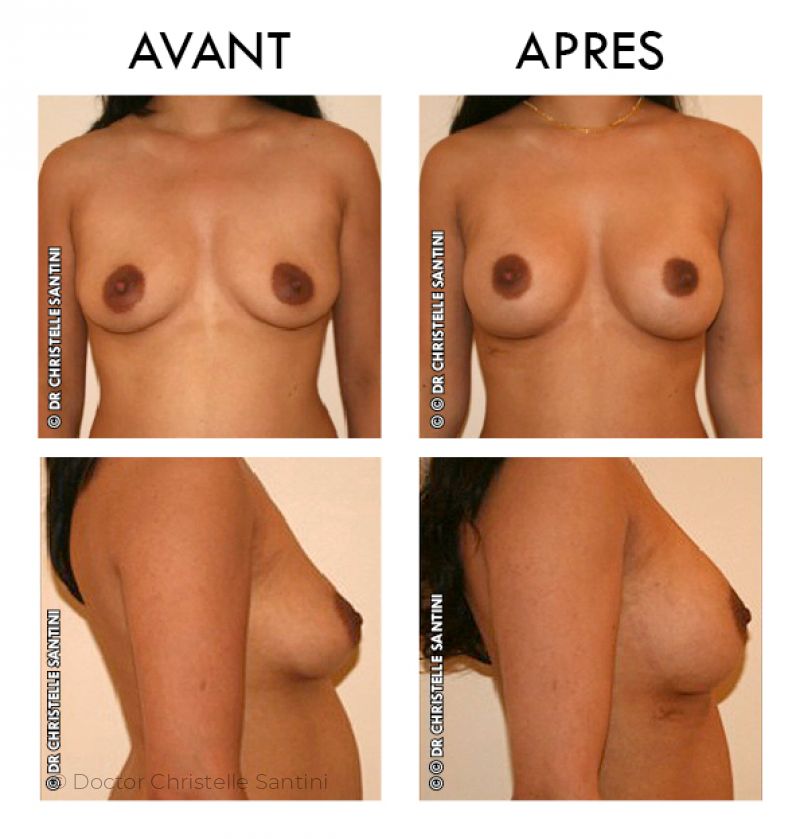





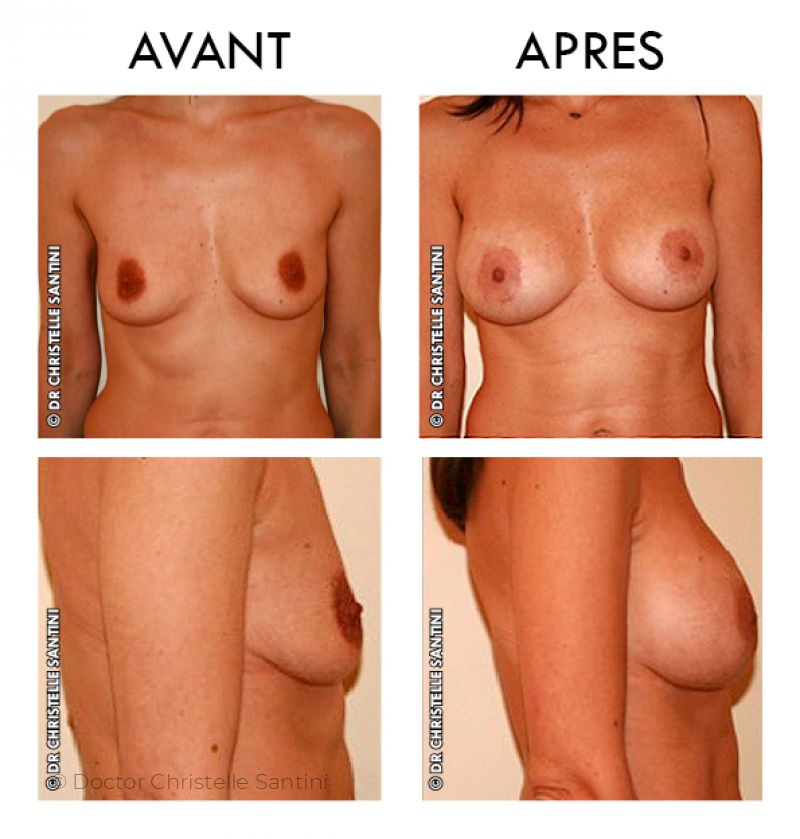


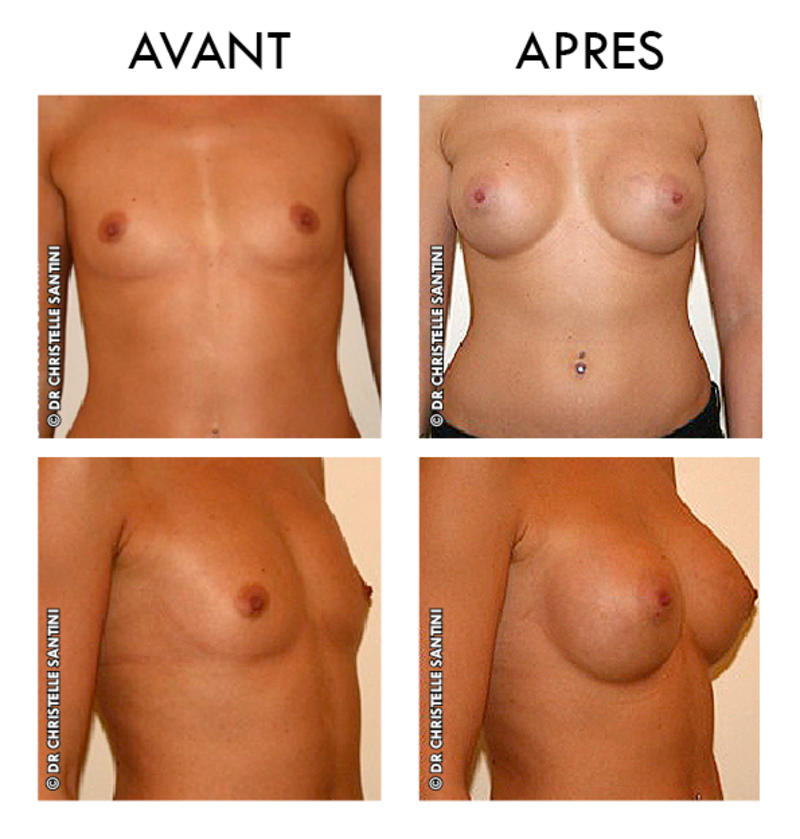
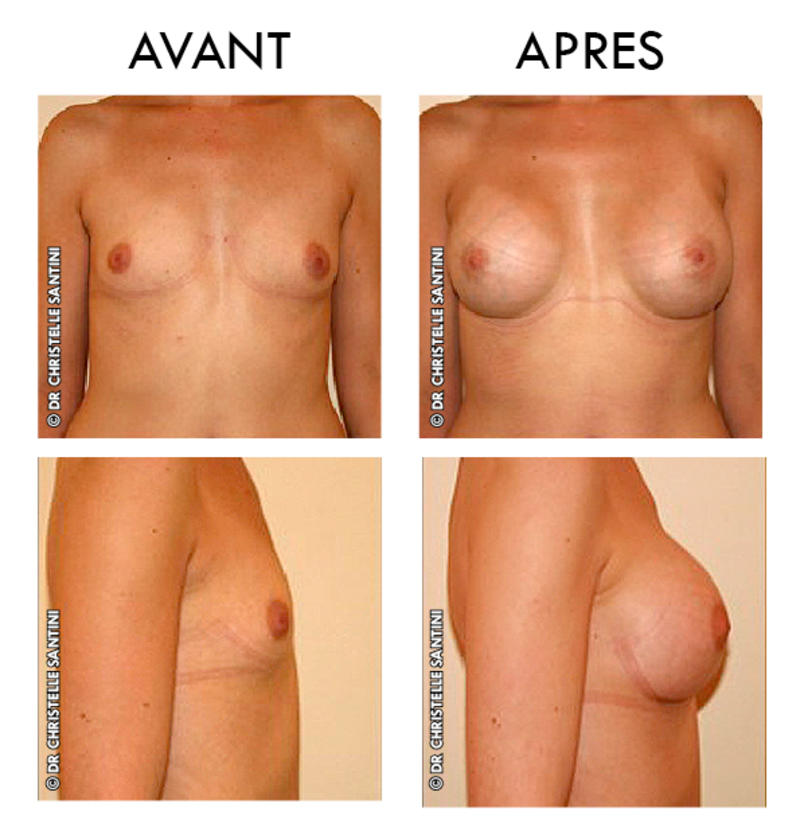
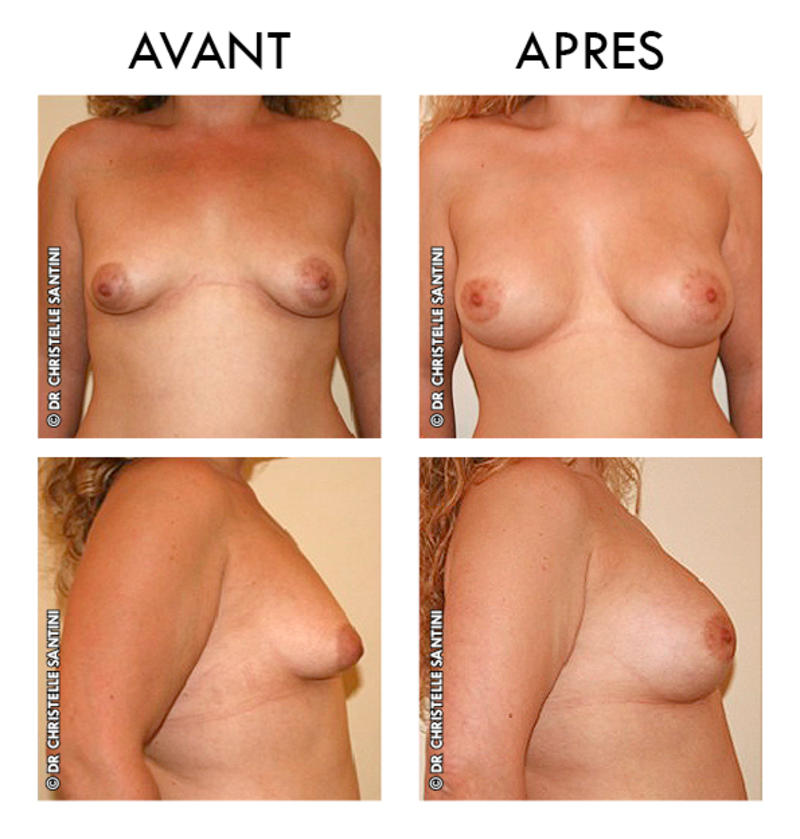


Add new comment